Don't wanna be here? Send us removal request.
Text
youtube
Dmitry Shishkin Liszt La Campanella
4 notes
·
View notes
Audio
A daily dose of Bach
The Well-Tempered Clavier Book 1, Prelude & Fugue No. 1 in C major (BWV 846)
Glenn Gould, piano
31 notes
·
View notes
Audio
String Quartet No.3 In F Major, Op.73 - III. Allegro Non Troppo
By Composer Dmitri Shostakovich
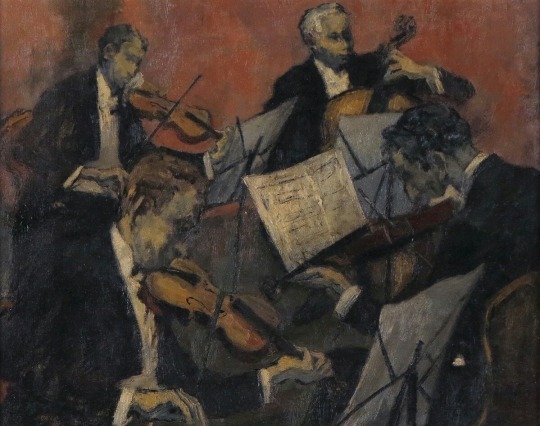
240 notes
·
View notes
Video
youtube
Shostakovich - Violin Concerto no.1 in a minor
Violinist David Oistrakh was the dedicatee of this concerto, and he aptly described the violin part as a “pithy ‘Shakespearian’ role”. And because it was written in four heavy movements, the works is symphonic in scope. The violin certainly sounds like an actor delivering a monologue, its introduction over and quiet orchestra, stretching through the nocturne like a slowly rising wave of mystery. The following scherzo sounds almost like a throwback to traveling bands around Europe, with it’s toe tapping syncopation, but harmonies are harsh as if the devil himself were playing. Shostakovich throws in his musical signature DSCH among the dizzying notes. The slow movement is a stately passacaglia, and is considered to be the highlight of the work for its bold orchestral writing and for the higher level of drama that the violinist has to carry. Near the end of the movement, the violinist goes into an intense and long cadenza that tears right into the final movement, the Burlesque. In an expected Shostakovich twist, the music is lively and, while frantic, it is somehow lighthearted. Extremely ironic considering all that has come before.
Movements:
1. Nocturne: Moderato
2. Scherzo: Allegro
3. Passacaglia: Andante
4. Burlesque: Allegro con brio - Presto
106 notes
·
View notes
Video
youtube
A daily dose of Bach
Partita for Violin No. 2 in D minor, BWV 1004 - 3. Sarabanda
Itzhak Perlman, violin
23 notes
·
View notes
Photo

Vladimir Horowitz seated at the piano at his home in New York.
139 notes
·
View notes
Audio
Dmitri Shostakovich - Symphony No. 5: Movement IV.
378 notes
·
View notes
Video
youtube
Prokofiev - Piano Concerto no. 3
I am disappointed in myself for missing Prokofiev’s birthday yesterday. Though I was also feeling sick all day, so I wouldn’t have gone out of my way to write a thought out post for him. Wrongs are being righted: here is his third piano concerto, one of his great masterpieces that is also considered to be one of the top piano concertos of the last century. It opens with a sense of nostalgia in the orchestra, until the energy picks up and the piano rolls in with child-like hyperactive runs. We quickly shift into a more “grotesque” and violent episode before the next main melody, paired with the interesting choice of castanets, dances through. This movement is an interesting display of orchestral color and texture, using the piano more as a percussive element to the orchestra, more integrated than the tradition of concertos-as-showmanship-pieces from the prior generations. The second movement is a set of variations on a simple theme, and like all good variations we are given a series of contrasting moods and levels of energy. The finally sneaks in with a bit of a sarcastic haughtiness, before becoming a rowdy exercise in dexterity and endurance, balancing the main melody with a slower, more lyrical countermelody. The finale surges in an uplifting roar of the major key. This concerto is one of my favorites. I’d first heard it in high school and was taken in by the “heavy metal” energy in the first movement. Though it isn’t ever one note, one mood, I can’t help but associate it with summer afternoons walking around a city neighborhood. Different sights, sounds, colors. Of all the performances, I decided to share this iconic recording of Martha Argerich at the piano, her hands blurring through the dense passages as if there was no effort involved.
Movements:
1. Andante - Allegro
2. Tema con variazioni
3. Allegro, ma non troppo
104 notes
·
View notes
Photo

ten commandments for serious violinists from a 1930s music magazine
2K notes
·
View notes
Photo
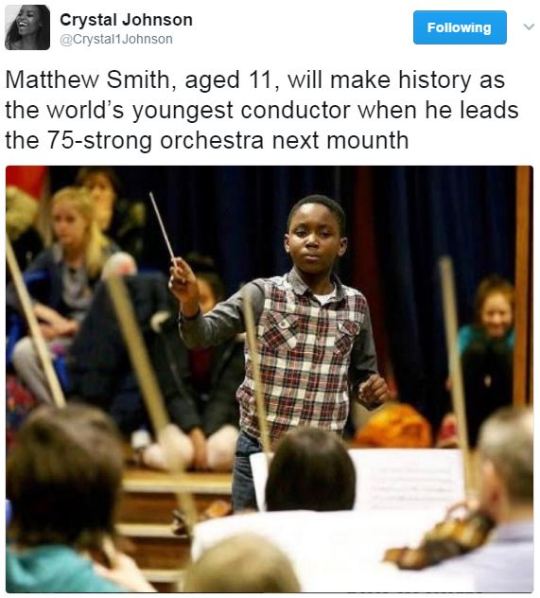

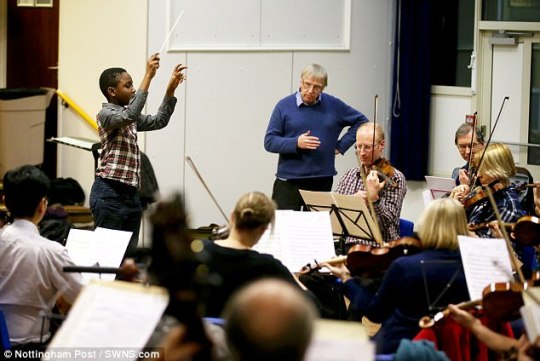
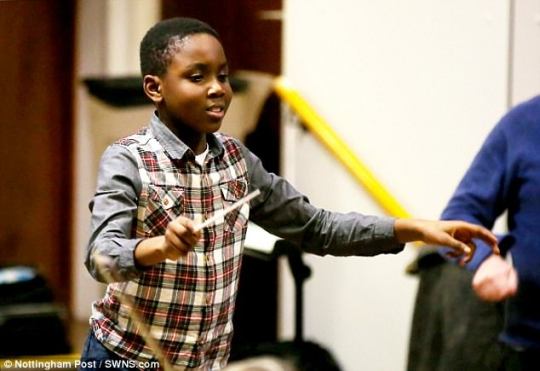

The concert will make Matthew the world’s youngest ever conductor!
Matthew’s performance will form part of NSO’s ‘Animal Magic!’ show which will also feature Swan Lake by Tchaikovsky and Peter and the Wolf by Prokofiev.
Neil Bennison, music programme manager at the Royal Concert Hall, said young conductors like Matthew are rare.
Successful conductors have to be team managers, leaders, motivators and diplomats, and these people skills take time to develop and require a level of maturity that only comes with years of experience.Orchestras can be pretty merciless to conductors for whom they have no respect, so you’d have to be a supremely confident young maestro to win over a lot of hardened professional musicians.
Derek Williams, NSO conductor and Matthew’s music teacher, added:
I spotted Matthew’s musical talent very early on in his musical tuition as I’ve been teaching him violin for five years. There aren’t many children who have the ability to conduct a 75-strong orchestra from memory and it’s a really incredible thing to witness.
youtube
Can we be honest for a moment and say that it’s rare to hear anything positive on the news, especially when it comes to black children? Matthew Smith is definitely making history. This young man is talented. I hope he does well and goes far.
8K notes
·
View notes
Text
I’m working on a project regarding race in classical music in the context of contemporary composition, and I thought I’d share some of the papers I’ve come upon! Enjoy.
Come Out to Show the Split Subject: Steve Reich, Whiteness, and the Avant–Garde
John Cage’s Entanglement with the Ideas of Coomaraswamy
Reich in Blackface: Oh Dem Watermelons and Radical Minstrelsy in the 1960s
Improvisation as ‘Other’: Creativity, Knowledge and Power – The Case of Iranian Classical Music
Music Education, Multiculturalism, and Anti-Racism – Can We Talk?
Black Moral Authority, Jazz, and the Changeable Shape of Whiteness
Negotiating Freedom- Values and Practices in Contemporary Improvised Music
239 notes
·
View notes
Video
youtube
Liszt - Totentanz
13 pieces for Halloween, no.6: Liszt had a morbid obsession with death throughout his career. Many works, especially those toward the end, focus on the finality and grotesque aspects of death. While it makes sense that one would be focusing on and thinking about death near the end of their own life, Liszt was known to frequent Parisian hospitals and morgues back in his early twenties. He shows this same fascination and curiosity through the subject of this…almost proto-tone poem that is a set of variations on the Gregorian chant “Dies Irae”. This work is overflowing with Romantic era qualities: free form genre, using the soloist of a concerto to show off the performer’s skills, and supernatural themes. Like Saint-Saëns’ tone poem, this work emphasizes the dark, mysterious, grotesque side of the unknown, and both these works coming after Berlioz’ Symphony Fantastique, which is a famous example of using the Dies Irae theme to convey a horror/supernatural idea. That symphony struck a chord [pun intended] with the young Liszt, and may have been a major inspiration in writing variations off that Medieval theme. It’s also interesting to note that, what makes this work stand out, is Liszt’s very percussive use of the piano, with it’s jarring and hammering introduction, and the variations with repeated notes in a fugato style. It can be compared to Bartok’s own piano writing, nearly a century later.
96 notes
·
View notes
Video
youtube
Stravinsky - Violin Concerto in D
This is one of Stravinsky’s popular neo-classial works, and a good companion to Brahms’ concerto. Like Brahms, Stravinsky had help writing the violin part from a violinist, Samuel Dushkin, because Stravinsky wasn’t familiar with the violin enough to have the confidence to write for it well. This concerto follows the neo-classical flair by writing in older forms: the toccata, arias, and capriccio. Also, each movement contains a large ranging chord [D4 + E5 + A6], that becomes a prominent motif. Stravinsky used chord displacement across large ranges in many of his works, and is considered a pointillist texture. This concerto is very sunny, and the last movement always makes me think of an avery of tropical birds.
Movements;
1. Toccata
2. Aria I
3. Aria II
4. Capriccio
127 notes
·
View notes
Photo
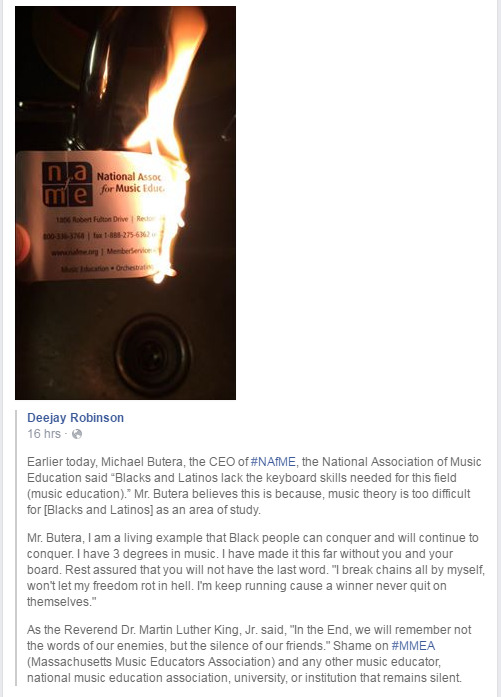
BOOST THIS. This man has a lot of influence and power in our field on a political and social level.
first-hand account of these comments and their context:
https://alternateroots.org/why-we-must-have-inclusion-diversity-and-equity-in-the-arts-a-response-to-the-national-association-for-music-education/
2K notes
·
View notes
Audio
Composer: Igor Stravinsky [Игорь Стравинский] (1882 - 1971)
Work: Pas d'action. Apollo and the Three Muses from Apollon musagète (1927/8)
Perfomer: London Symphony Orchestra; conducted by Robert Craft
228 notes
·
View notes
Video
youtube
Prokofiev - Violin Concerto no. 2 in g minor
Prokofiev was pleased with the first performance of his two violins sonata by musicians Robert Soetens and Samuel Dushkin, that, when he found out that Stravinsky had previously written a violin concerto for Dushkin, he decided to write his own concerto for Soetens. He wrote the new concerto, touring with Soetens, and so later he wrote "The number of places in which I wrote the Concerto shows the kind of nomadic concert-tour life I led then. The main theme of the 1st movement was written in Paris the first theme of the 2nd movement at Voronezh, the orchestration was finished in Baku and the premiere was given in Madrid.“ The nomadic spirit can be heard best in the first movement [with an almost folksy Russian tune] and the last [that makes use of castanets, giving it a Spanish flavor]. Despite its lyricism, the work has tense undertones throughout.
Movements:
1. Allegro moderato
2. Andante assai
3. Allegro ben marcato
54 notes
·
View notes
Video
youtube
O Fortuna, prologue (1st section) of the cantata Carmina Burana, 1935
composed by Carl Orff (1895-1982) performed by: - the Berliner Philharmoniker - Sir Simon Rattle (conductor) - the Rundfunkchor Berlin - Simon Halsey (chorus master) recorded at the Berlin Philharmonie, 31 December 2004
via
195 notes
·
View notes